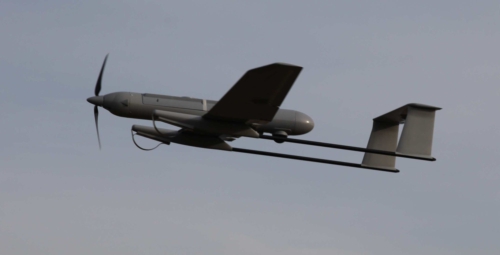Stratasys’ 3D printers makes parts for Survey Copter’s drones
Stratasys Ltd., a publicly traded, major manufacturer of 3D printers, said France-based Survey Copter, a remote control systems manufacturer, is using its 3D printing technology to make prototype and short-run component parts for mini-unmanned aerial vehicle (UAV) systems, also known as drones.
Survey Copter, a subsidiary of the European Aeronautic Defence and Space Company N.V. (EADS), designs and manufactures remote systems for surveillance photography and video service applications for UAVs, robots, tanks, complex turret systems as well as data transmission and target tracking devices.
The company previously outsourced its prototyping requirements and was looking for an in-house solution.
Stratasys’ French distributor, CADvision, sold Survey Copter a Stratasys Dimension Elite 3D Printer and a Stratasys Fortus 400mc 3D Production System, which produces nine colors of production-grade engineering thermoplastics using Stratasys’ patented Fused Deposition Modeling (FDM) technology.
Stratasys’ 3D Printers are deployed in the production of component parts for Survey Copter’s mini-UAV systems, including both helicopter and fixed-wing variants weighing up to 30 kilograms and 10 kilograms, respectively.
Ranging from a few millimeters up to parts measuring 40 cm by 10cm, these components comprise mechanical structures for optical turrets, structural elements of aircraft, battery compartment housing, supporting structure, as well as scale models.
“Effectively meeting our 3D printing needs can only be achieved via machines that are capable of producing quality parts with high reliability,” said Jean Marc Masenelli, Survey Copter’s managing director.
Masenelli said the ability to use different materials according to specific application needs offers key advantages for producing durable 3D printed parts.
Such materials include FDM thermoplastics polycarbonate, ABS and high performance ULTEM 9085, which boasts superior strength and lightweight properties and has an FST (flame, smoke and toxicity) rating, particularly valued within the aerospace and transportation industries.
“The Stratasys 3D Printer can produce parts with complex shapes – for us a highly sought after requirement and a principle differentiator that sets Stratasys’ proposition apart from that of other providers,” he said. “This specific capability enables us to produce parts of wide-ranging dimensions and hollow forms, as well as full honeycomb structures.”






